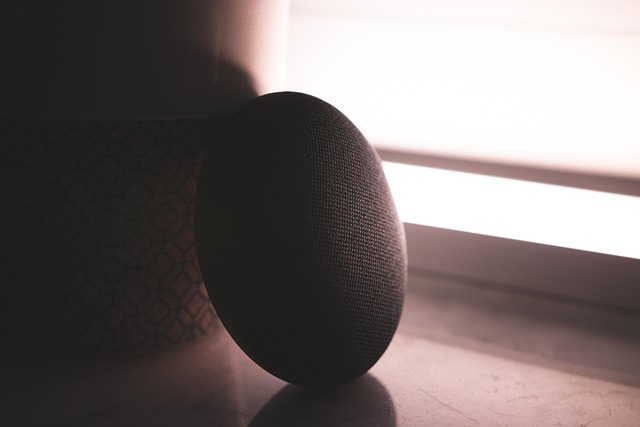Internal linking is a powerful strategy for Houston SEO services that improves user experience and website visibility. By strategically connecting relevant pages, it enhances navigation, crawlability, and search engine understanding of site architecture. This leads to better user engagement, reduced bounce rates, and higher rankings on SERPs. A well-optimized internal linking structure organizes content logically, signals site credibility, and boosts page authority, ultimately improving website performance for both users and search algorithms. Regular reviews and updates, along with tools like Ahrefs, SEMrush, and Moz, are essential to monitor success and refine the strategy.
In the competitive landscape of digital marketing, especially in Houston where SEO services are paramount, internal linking is a powerful yet often overlooked tool. This article delves into the fundamentals of effective internal linking structures, exploring how they enhance user experience and boost search engine rankings. We’ll guide you through strategies to optimize your site, provide essential tools for analysis, and offer metrics to measure success in enhancing Houston SEO services with improved internal linking.
- Understanding Internal Linking: The Foundation of Effective SEO in Houston
- How Internal Links Impact User Experience and Search Engine Rankings
- Strategies to Optimize Your Website's Internal Linking Structure
- Tools for Analyzing and Improving Internal Link Performance
- Measuring Success: Evaluating the Effectiveness of Improved Internal Linking
Understanding Internal Linking: The Foundation of Effective SEO in Houston

Internal linking is a fundamental aspect of search engine optimization (SEO) that often goes unnoticed, yet it plays a pivotal role in enhancing user experience and boosting online visibility for Houston SEO services. It involves creating strategic links between pages within a website to facilitate easier navigation and improve crawlability. By connecting relevant pages, internal links help search engines understand the site’s architecture, allowing them to index and rank content more effectively.
For instance, when a user navigates from one page to another on a well-structured website, internal linking ensures a seamless transition, providing a clear hierarchy of information. This not only benefits visitors by making it easier to explore the site but also signals to search engines that the site is organized and credible. Houston SEO services that prioritize internal linking structures can improve user engagement, reduce bounce rates, and ultimately, climb the ranks in search engine results pages (SERPs).
How Internal Links Impact User Experience and Search Engine Rankings

Internal links play a pivotal role in shaping both user experience and search engine rankings for any website, including those seeking Houston SEO services. When strategically implemented, they guide users through a site, fostering seamless navigation and a positive overall experience. By connecting relevant pages together, internal links encourage visitors to explore more content, reducing bounce rates and increasing time spent on the site—all factors that search engines like Google consider when ranking websites.
Moreover, search engine crawlers use internal links to understand the structure and hierarchy of a website. A well-organized internal linking structure signals to these crawlers which pages are most important, aiding in the indexing process and ultimately boosting the website’s authority and rankings for relevant keywords, including Houston SEO services-related queries.
Strategies to Optimize Your Website's Internal Linking Structure

To optimize your website’s internal linking structure, start by conducting a thorough audit using Houston SEO services. Identify all pages and their relationships to one another; this involves analyzing anchor text, link placement, and overall user experience. A strategic approach is key; organize content logically into categories and subcategories, ensuring each page has relevant inward and outward links.
Using keyword-rich anchor text can enhance both click-through rates and search engine visibility. Interlink related content to boost the authority of individual pages, ultimately improving site navigation and user engagement. Regularly review and update your internal linking strategy as your website grows and evolves.
Tools for Analyzing and Improving Internal Link Performance

In today’s digital landscape, where user experience is paramount, efficient internal linking plays a pivotal role in making websites more accessible and engaging for visitors, especially for those seeking Houston SEO services. Tools like Ahrefs, SEMrush, and Moz are powerful allies in analyzing and optimizing these structures. They provide insights into link metrics, helping identify high-value links to strengthen your website’s architecture.
These tools allow you to assess anchor text diversity, ensuring a natural flow of links, and uncover opportunities for internal linking strategies. By prioritizing content with low internal link density, you can enhance page authority and improve crawl efficiency. This, in turn, benefits search engine rankings, making your site a more appealing resource for both users and search algorithms.
Measuring Success: Evaluating the Effectiveness of Improved Internal Linking

Evaluating the success of enhanced internal linking structures is a crucial step in any Houston SEO services endeavor. By implementing changes to improve site navigation, the goal is to create a seamless user experience, reducing bounce rates and increasing time spent on-site. One effective method to measure this success is through Google Analytics, which provides insights into user behavior and interaction with your website.
Key metrics to watch include click-through rates (CTR) from internal links, pageview increases, and reduced bounce rates. A rise in CTR indicates that users are engaging with the content more, suggesting that the navigation improvements have made relevant information easier to access. Increased pageviews validate that visitors are exploring your site further, while lower bounce rates show that users find value in the content and are more likely to convert or return. These data points collectively paint a picture of improved user satisfaction and search engine optimization, making it an invaluable tool for any digital marketing strategy, including those offered by Houston SEO services.
By enhancing your website’s internal linking structure, you can significantly improve both user experience and search engine rankings in competitive markets like Houston. Implementing strategic optimizations using tools tailored for SEO in Houston ensures your site offers a seamless navigation journey while boosting its visibility on search engines. Regularly analyze performance metrics to gauge success and make data-driven adjustments, ultimately driving better results from your Houston SEO services.
